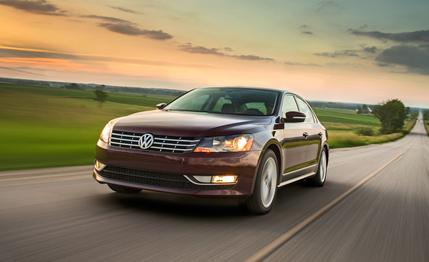 Long-Term Road Test Wrap-Up
Long-Term Road Test Wrap-Up
Family sedans from Chevrolet, Ford, Honda, and Toyota have all earned their places in our culture, but Volkswagen’s Passat has always struggled to assimilate. Between its arrival in 1974 as the Dasher and its sixth-generation redesign in 2012, the Passat was at times too small, too unreliable, and too expensive. Sales remained relatively microscopic. Just 12,497 Passats moved in 2010; Mitsubishi came close to unloading more Galants. Back then, the Passat didn’t even account for 0.01 percent of the sales in the largest segment of what was then the largest new-car market in the world. A poor showing for the Volkswagen Group, which aspires to be the world’s No. 1 automaker.
To help realize its dream of world domination, Volkswagen designed the 2012 Passat specifically for our market and built it in a new billion-dollar plant in Chattanooga, Tennessee. The new Passat delivered more legroom, a larger trunk, and, most important, a price tag as much as $7000 cheaper than the previous car. Now a naturalized citizen, the Passat shamelessly plays to our American, more-is-more-especially-if-it’s-for-less way of thinking. Annual sales are up by nearly 100,000 cars.
Volkswagen’s appeal to the masses won us over, too, at least initially. The Passat took the top spot in a May 2012 comparison test against sales darlings like the Toyota Camry, Honda Accord, Hyundai Sonata, and Chevrolet Malibu. But six months later, the German placed last in a four-way shootout among newer competitors.
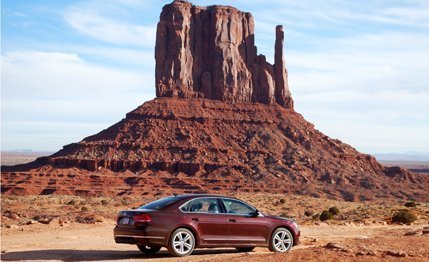
We chose to spend 40,000 miles with the diesel-sipping model because the Passat’s base engine, the hoary 2.5-liter gas five-cylinder, was already outdated in 2012. With the power of a four-cylinder, the fuel economy of a six-cylinder, and the NVH attributes of a lawn mower, the five-cylinder gasser was a key factor in the comparison-test loss. For 2014, Volkswagen introduced a modern 1.8-liter turbocharged inline-four as the base engine and, with it, weakened the argument for spending the extra cash on the diesel.
Still, Volkswagen’s diesel is unique in the mid-size segment with a skill set rivaled only by more-complex hybrids. A full tank stretched as far as 690 miles, and a single gallon of diesel carried us up to 47 miles when we were on our best behavior. Over the course of 40,000 miles, we averaged 39 mpg, just one notch below the EPA’s highway rating.
Impressive as that is, we were only halfway to paying off the $2490 premium for the TDI engine at the end of our 40,000-mile run. With diesel averaging $3.91 per gallon and regular unleaded at $3.42, we would need another 39,598 miles before the TDI began saving money over a comparable 2.5-liter Passat achieving 26 mpg.
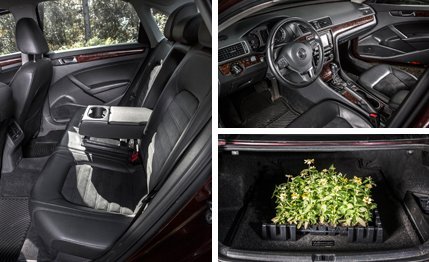 Top right: Hey "wood" trim. You're not fooling anyone. Bottom right: Velcro-secured blocks work well to restrain cargo.
Top right: Hey "wood" trim. You're not fooling anyone. Bottom right: Velcro-secured blocks work well to restrain cargo.
Our top-trim, $33,945 Passat came well equipped, though you wouldn’t mistake the faux wood and velour-like seat inserts for luxury. Accouterments included a sunroof, navigation, dual-zone climate control, a rearview camera, passive entry, and what Volkswagen calls “comfort sport seats,” which are power adjustable, heated, and trimmed in leather. They’re long-haul comfortable, as advertised, but offer little bolstering to support the sport claim. Our sole option rang in at $235 for a set of all-weather floor mats, including a trunk mat with L-shaped blocks that Velcro to it to keep cargo from sliding around.
Specifying that level of equipment means you’re also getting the six-speed dual-clutch automatic. It clicks through shifts with only the faintest interruption to power delivery, but the clutch can be slow to bite when rolling away from a stop. The natural instinct—to feed in more throttle—then causes the computer to dump the clutch, and you end up with up to 236 pound-feet of torque chirping the front tires. That ample grunt is useful for staying ahead of traffic in town, though some drivers deemed 140 horsepower insufficient for highway passing.
In testing, we measured the jog to 60 mph in 8.5 seconds with the quarter-mile passing in 16.6 seconds at 83 mph. After 40,000 miles, we knocked a tenth of a second off the 60-mph time, but the quarter-mile went unchanged.
Not as sprightly as a Honda Accord or a Mazda 6, the Passat still smartly manages its 3525-pound bulk with tight steering and controlled body motions. Cornering grip in the initial test was a modest 0.82 g (rising to 0.84 g on worn tread), due in part to the permanent stability control that intervenes before the tires actually lose adhesion. Our only gripe about the chassis was for its slightly overdamped suspension, which proved brittle over sharp impacts. However, the Americanized Passat hasn’t completely sacrificed its European manners to Yankee tastes. This car shows that big and spacious doesn’t have to mean sloppy and graceless. While the Passat never encourages spirited driving, neither does it discourage taking an off-ramp at speed.
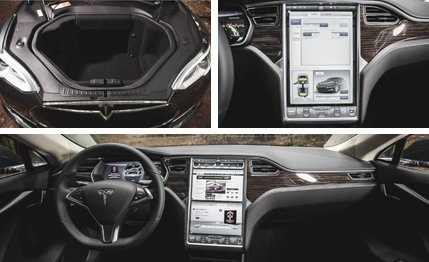
Volkswagen’s full-grown mid-sizer is most in its element when traveling in a straight line, though. “This car loves the open road, and I love being in it when I’m looking at 500-mile days,” wrote contributor Tony Swan. The firm seats, spacious cabin, and a sense of refinement make for a placid highway ride. The sedate exterior styling—understated or boring, depending on your personal bias—means outward visibility remains unencumbered and rear-seat headroom is ample. In many ways, the Passat plays to the elements of American culture that seem to often fascinate Germans: 60-mile commutes, cross-country vacations, and garages big enough to swallow Suburbans.
The switchgear doesn’t have the great tactile feel as in Passats of yore, but Volkswagen successfully skirted the blatant cheapness that you would expect from a $7000 price cut. We were, however, tortured by the laggy touch-screen navigation and a stereo system that is slow to turn on, slow to change stations, and slow to adjust the volume. Aggravated drivers compared its processing power to ballpoint pens, an abacus, the Commodore 64 computer of the 1980s, the vacuum-tube radio in a 1948 Buick, and technical director Don Sherman’s calculator watch.
The nav system’s quirks appeared to be a matter of design, the product of underpowered hardware and resource-hungry software rather than buggy code. But we did experience one meltdown. “Backing out of a parking space, the rearview camera was MIA,” reported associate online editor Alex Stoklosa. “A few minutes later, it reappeared while traveling forward at 35 mph.” This episode, he noted, was followed by an inoperable volume knob, a brief delay, and then, without warning, deafening volume. The knob again decided to quit responding (as did the steering-wheel controls), and he spent several seconds furiously trying to turn off the radio before it finally quit.
After 40,000 miles, though, the service record showed that our time with the Passat was virtually problem-free. The VW required no unscheduled stops at the dealer and suffered no major mechanical calamities. With 19,224 miles on its odometer, the instrument cluster flashed a coolant-light warning indicating that the reservoir was below the minimum fill line. We added a quart and never had another problem.
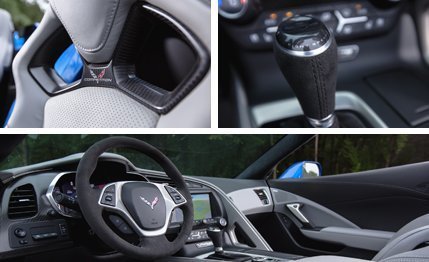 An optional in-car system consisting of a catheter and a urea-separator would allow for uninterrupted use of the TDI's range.
An optional in-car system consisting of a catheter and a urea-separator would allow for uninterrupted use of the TDI's range.
A trim piece fell off the center console, and the clip holding the driver’s-side visor broke. Both issues were fixed during scheduled service stops, at a cost of $12 for the replacement clip. And, thanks to Volkswagen’s routine maintenance program, the 40,000-mile service was the only one we paid for, although it was expensive at $832. In addition to changing the oil, replacing the filter, and topping up the AdBlue diesel exhaust fluid, the fourth service calls for a pricey transmission flush. (Starting with 2014 models, Volkswagen’s maintenance program has been shortened to 24 months and 24,000 miles, so life will get more expensive for Passat buyers.)
With its reliability, size, and price aligned with our expectations of a mid-size four-door, the Passat is every bit as American as a Toyota Camry or Honda Accord, cars wearing foreign badges but built in and for our continent. Volkswagen’s willingness to design cars with our open highways, cheap fuel, and suburban sprawl in mind has softened the Passat’s unique traits at the expense of assimilation. The Volkswagen Passat is living the American dream.
Erik Johnson: A big, comfy cruiser in the American tradition. Eats up miles—lots of ’em, given this diesel’s prodigious range.
Alex Stoklosa: This TDI version feels like the German engineers’ secret attack against the cynically American Passat 2.5.
Ron Sessions: There’s a long distance before you get to a firm brake pedal.
Aaron Robinson: You know how they say a modern car has more computing power than the moon rocket? In this car I’m not so sure.
Jeff Sabatini: There are so many more-interesting choices in this segment. The only real draw here is the diesel.
Carolyn Pavia-Rauchman: Not all diesel pumps are created equal. Some are messy and dirty and leave black gunk on your hands.
Tony Swan: The TDI is a very pleasant long-haul cruiser—great at freeway speeds and capable of exceeding the range of any known human bladder between fuel stops.
Don Sherman: Chortles at low rpm and low speed, but otherwise there’s a surprisingly low level of diesel grief.
Jared Gall: The diesel’s output is sufficient at lower elevations, but above 4000 feet, it’s completely gutless. Passes require an honest quarter-mile or more.
Mike Sutton: Its relaxed and soothing demeanor makes for a comfortable commuter car.